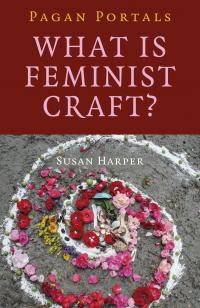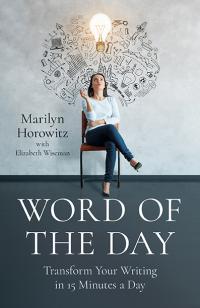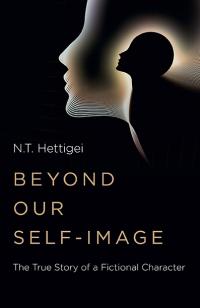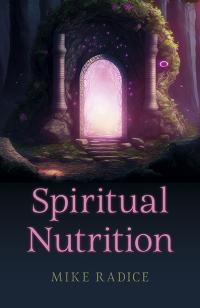
May in the Wheel of the Year Pt 2: Wildflowers, Magic and Eco-Paganism - By Lucya Starza
To me, Paganism is a nature religion, so caring for nature is a sacred task as well as protecting the world for the future. I also believe in acting locally when possible. You can’t get much more local than your own garden, so I've signed up for No Mow May - a campaign by conservation charity Plantlife. The idea is to let lawns grow this month to allow wildflowers to flourish as food for bees, butterflies and other insects. According to its Every Flower Counts (EFC) survey:
"A one metre square on a typical EFC lawn last year had 17 daisies and a smattering of buttercups and dandelions. Across lawns, germander speedwell and field forget-me-nots were next most likely to show. Such a square of lawn would produce about two milligrams of nectar sugar and three microlitres of pollen per day."
You can find out more about No Mow May at Plantlife’s website: https://nomowmay.plantlife.org.uk/what-is-no-mow-may/. Here’s more about the folklore and magic of wildflowers you might find if you let your lawn grow in May:
 Daisies
Daisies
Daisies are associated with happiness, protection, courage and love, according to Rachel Patterson in A Kitchen Witch's World of Magical Herbs & Plants. She also mentions the old game where you pick a daisy and ask: "He loves me", then, "He loves me not" as you pluck one petal at a time. The idea is that the final petal will give you the true answer to a question about love. Here’s A Daisy Spell for Overcoming Indecision I devised based on that game and words from the old music hall song Daisy, Daisy, Give Me Your Answer, Do.
Pick a daisy then think about any matter you are in a dilemma about – it doesn’t have to be about love - then say: "Daisy, daisy, give me your answer to my question." Pulling one petal off ask: "Should I do this?" Then ask: "Should I do that?" as you pluck the next. Do this slowly and visualise each of your options until the petals are gone. When you get to the last petal, you should have a possible answer to your question.
In the traditional divination game, whatever the last petal represents is correct but for this spell you should know the answer more correctly by how you feel about it. The daisy is simply helping you tap into your own intuition. It’s possible you’ll know the answer the daisy gave is the right one, but if you have a strong feeling that the daisy's answer isn’t right for you at this time, trust that your intuition is giving you good advice.
Buttercups
I’m sure we all remember another old game with these bright yellow flowers – holding one under your chin to see if you like butter. Honestly, I’d thinking tasting butter would be a more direct method than floral divination! In spellcraft they are associated with wealth and protection as well as fortune telling.
 Dandelions
Dandelions
These are such useful plants it amazes me that many gardeners consider them weeds. You can eat the leaves in a salad and make teas out of the petals or roots, which are thought to have health benefits as well as a reputation for aiding divination. They are a diuretic though, so check for any potential problems before drinking! Magically, dandelions can be used in love spells, helping to transform problems, and wish-making. Take a dandelion clock and make a wish. Then close your eyes and try to blow all the fluffy white seeds from the stalk in one go.
Germander Speedwell
These little blue flowers traditionally bestow good luck on travellers as the sight of them is said to speed people on their way. A sprig can also be worn as a charm when embarking on a journey. Bees will love them too as they buzz around your garden.
Forget-me-Nots
Another little blue flower, these mean "true love" according to The Language of Flowers by Margaret Pickston. John Fiske, in Myths and Mythmakers: Old Tales and Superstitions Interpreted by Comparative Mythology, suggests wearing forget-me-nots in a hat can help you see past illusions, particularly those caused by fairies.
 Bluebells
Bluebells
For me, bluebells are the quintessential early May flower, but it’s considered unlucky to bring them into the house. In fact, folklore suggests leaving them well alone in the wild too, as even trampling them invites bad luck. However, they do present a bit of a quandary from an environmental perspective.
In England there are two species of bluebell - native, British bluebells and non-native Spanish ones. Cross-breeding means the British plants are dying out. Bluebells have grown in my garden ever since I was a child, and at one time they were the native type. Over the years they’ve become hybridised. If I lived in an area where native bluebells grew, I would weed out my hybrids, but I live in London where most of the bluebells are like mine. Even if I bought some native bluebell seeds to sow, over a few years they would quickly become hybridised again. So, I let my bluebells grow tall for luck and because I love the sight of them.
Note: None of this is medical advice, it is purely for folkloric and environmental information purposes.
This is part of a series of posts I’m writing for the Moon Books Blog on the theme of the Wheel of the Year. They will be compiled and edited into a book: Pagan Portals – Rounding the Wheel of the Year. Other books by Lucya Starza in the Pagan Portals series include Candle Magic, Guided Visualisations, Poppets and Magical Dolls, and Scrying. Lucya edited the community book Every Day Magic – A Pagan Book of Days.
Categories:
0 comments on this article






